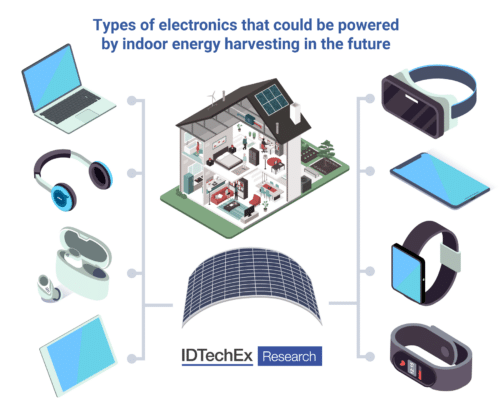IDTechEx discusses powering ubiquitous electronics and IoT applications with the help of perovskite photovoltaics.
A connected world comes with the burden of batteries and unsightly extensive wiring. As more technologies are adopted into homes and businesses, the chaotic clutter of wires and the dwindling count of nearby power sockets become an increasing nuisance. Solar-powered devices are of interest to both homeowners and to retailers and would eliminate the need for batteries in many indoor IoT devices.

Perovskite solar cells are an exciting new thin film technology that have demonstrated remarkably high efficiencies. These PVs can provide similarly high-power density as silicon PV at a lower cost, a fraction of the weight, and with a simpler manufacturing process. These solar cells are able to maintain relatively high efficiencies even under low intensity or diffuse light, which makes them well-suited to both indoor and outdoor energy harvesting. Since the perovskite material applies like an ink, the solar cells are very lightweight, flexible, and unobtrusive. They can easily be integrated into small electronic devices and used to power them directly.
For a lot of household and consumer electronics, high power is not a strict requirement. For example, powering headphones, sensors, and lights does not require state-of-the-art solar technology. Solar cells with an efficiency of 10-15 % could be sufficient to operate most small and portable electronics. Durability is another typically important criterion that can be relaxed since many electronics are intended for short-term use, with consumers frequently updating their devices for newer models. The need for 25-year lifespans, as is typical for rooftop solar panels, is no longer the standard to measure by.
The key metric for the successful deployment of solar cells in consumer and retail electronics is cost. Given the increasingly high volume of consumer and retail electronics, energy solutions need to be economical. Additionally, solar technology will be competing with well-established and relatively inexpensive batteries. Solar could move into a competitive position with batteries if it were to demonstrate lower costs and greater practicality.






